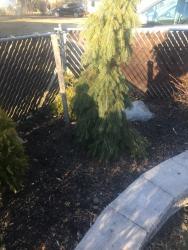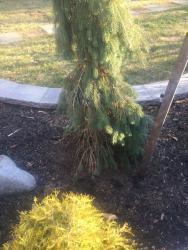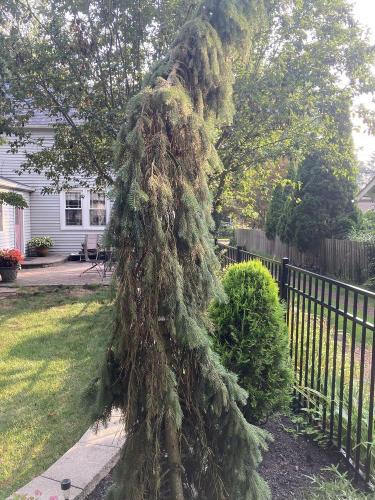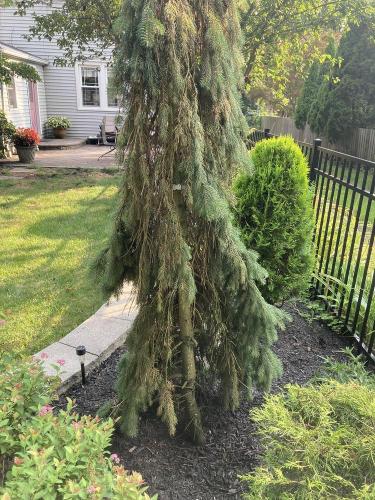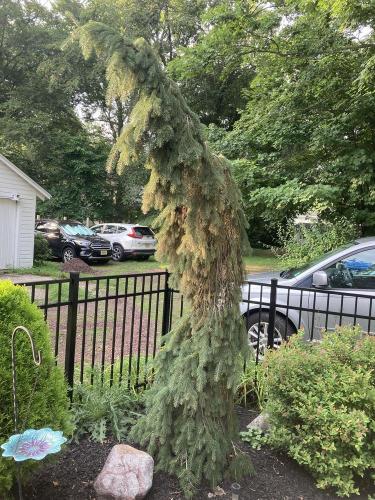There is a saying out there somewhere about "...helps those who help themselves..."
I'm sorry that I didn't see this post way back when - I'd have offered these thoughts then.
That singular post was never followed up at all that year, even though it was posted early in the growing season, nor at any other point up until now. In fact,
NJDale apparently didn't make any other posts AT ALL in the four years as a (free) member here on a FREE site.
I'm about to give up on this and cut it down and since this site has not been helpful at all, I'm short on answers right now.
I feel sad for the poor
Picea glauca 'Pendula'. It is growing way outside its normal comfort zone - which is the upper tier of the US and most of Canada. Southern NJ is a day at the beach (zone 7?), and this species is probably feeling the long term effects of heat, humidity, and high soil temperatures. Meanwhile, it's owner is apparently plagued by loss of use of typing hands or computer malfunction, along with inability to perform other methods of research like consulting the local Cooperative Extension Service office, library, institutions of horticultural significance like Rutgers University, or a conifer collector club - all of which customarily and enthusiastically respond with reams of information and advice.
When I looked at the first picture, my immediate thought was that's textbook 'dog hiking its leg and hitting the spot' urine burn. That might still be accurate, but unless NJ houses some really tall dogs, that doesn't answer the additional malaise higher up on that 8' tall plant. There is likely mite activity, and potentially several different fungal organisms bent on making that spruce wish it was back in the Great White North. A thorough soil test can attest to whether there are available nutrient problems.
None of this criticism is meant to say this and other species cannot be grown in southern NJ. It is meant to indicate that a gardener needs to know more about "exotic to your area" plants, and be prepared to provide additional - and possibly extraordinary - care in order for that plant to thrive.
One final comment, which is probably too late to help but may help with future
Caveat emptor:
NJDale could tell us in what kind of condition (bare root, container, balled-and-burlapped) this plant came to this landscape. If a container grown specimen, an additional problem could have been encircling rootbound conditions which have exacerbated growing problems over time. Also, if this tree was planted too deeply with its crown/basal flair significantly below finished soil grade, this could also lead to deteriorating performance and increased susceptibility to all the previously mentioned plant problems. If the decision is made to terminate and edit this plant from the landscape, do yourself a favor and perform some forensics as the plant is dug out. Take lots of pictures to post to this thread - and help others avoid the consequences and have better success in their gardening efforts.
Here are links to additional information. The MBG, Rutgers, and Michigan State sites have on-target information that likely line up with this plant's problems.
https://www.missouribotanicalg...
https://plant-pest-advisory.ru...
https://www.canr.msu.edu/news/...
https://extension.psu.edu/spru...
https://mortonarb.org/plant-an...

